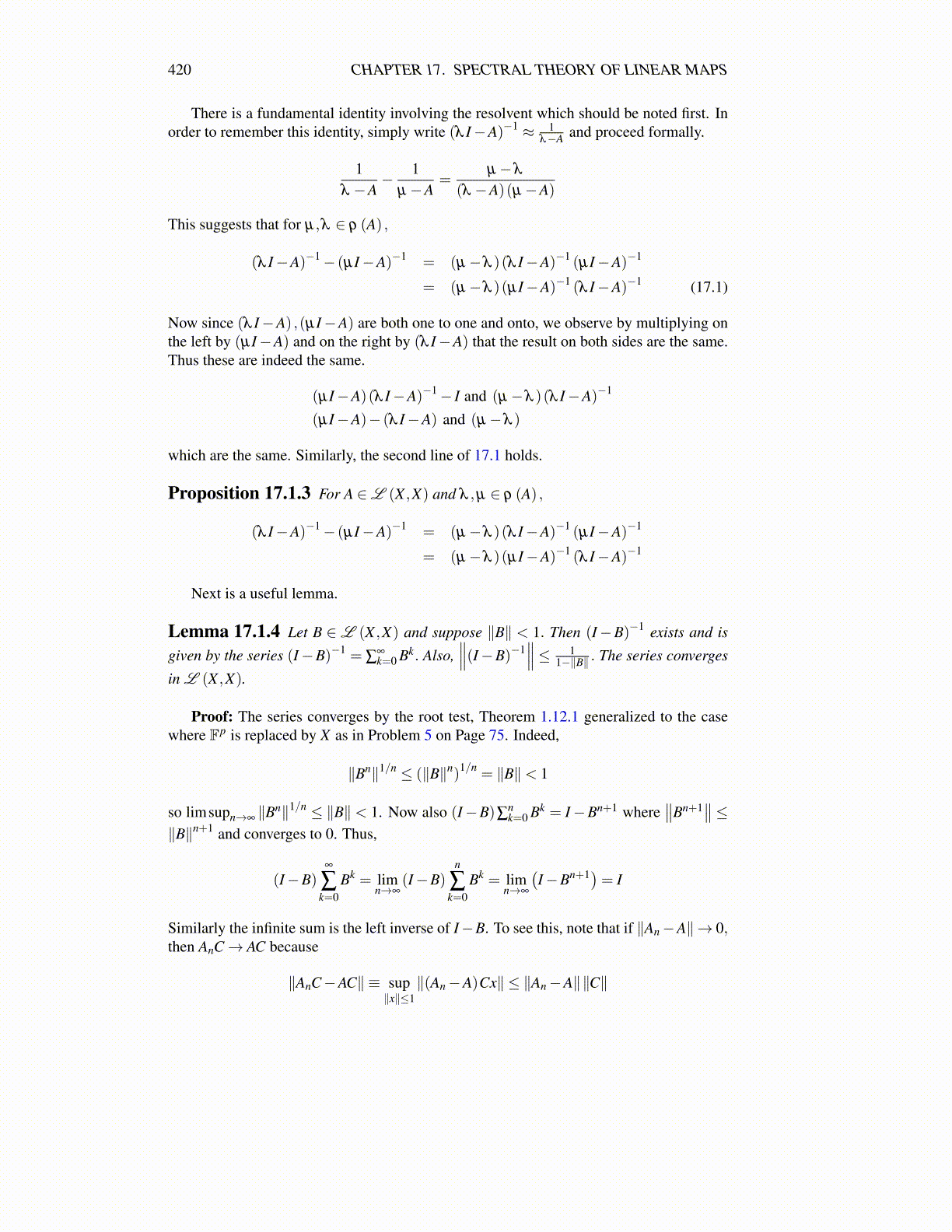
420 CHAPTER 17. SPECTRAL THEORY OF LINEAR MAPS
There is a fundamental identity involving the resolvent which should be noted first. Inorder to remember this identity, simply write (λ I−A)−1 ≈ 1
λ−A and proceed formally.
1λ −A
− 1µ−A
=µ−λ
(λ −A)(µ−A)
This suggests that for µ,λ ∈ ρ (A) ,
(λ I−A)−1− (µI−A)−1 = (µ−λ )(λ I−A)−1 (µI−A)−1
= (µ−λ )(µI−A)−1 (λ I−A)−1 (17.1)
Now since (λ I−A) ,(µI−A) are both one to one and onto, we observe by multiplying onthe left by (µI−A) and on the right by (λ I−A) that the result on both sides are the same.Thus these are indeed the same.
(µI−A)(λ I−A)−1− I and (µ−λ )(λ I−A)−1
(µI−A)− (λ I−A) and (µ−λ )
which are the same. Similarly, the second line of 17.1 holds.
Proposition 17.1.3 For A ∈L (X ,X) and λ ,µ ∈ ρ (A) ,
(λ I−A)−1− (µI−A)−1 = (µ−λ )(λ I−A)−1 (µI−A)−1
= (µ−λ )(µI−A)−1 (λ I−A)−1
Next is a useful lemma.
Lemma 17.1.4 Let B ∈ L (X ,X) and suppose ∥B∥ < 1. Then (I−B)−1 exists and is
given by the series (I−B)−1 = ∑∞k=0 Bk. Also,
∥∥∥(I−B)−1∥∥∥≤ 1
1−∥B∥ . The series converges
in L (X ,X).
Proof: The series converges by the root test, Theorem 1.12.1 generalized to the casewhere Fp is replaced by X as in Problem 5 on Page 75. Indeed,
∥Bn∥1/n ≤ (∥B∥n)1/n = ∥B∥< 1
so limsupn→∞ ∥Bn∥1/n ≤ ∥B∥ < 1. Now also (I−B)∑nk=0 Bk = I−Bn+1 where
∥∥Bn+1∥∥≤
∥B∥n+1 and converges to 0. Thus,
(I−B)∞
∑k=0
Bk = limn→∞
(I−B)n
∑k=0
Bk = limn→∞
(I−Bn+1)= I
Similarly the infinite sum is the left inverse of I−B. To see this, note that if ∥An−A∥→ 0,then AnC→ AC because
∥AnC−AC∥ ≡ sup∥x∥≤1
∥(An−A)Cx∥ ≤ ∥An−A∥∥C∥